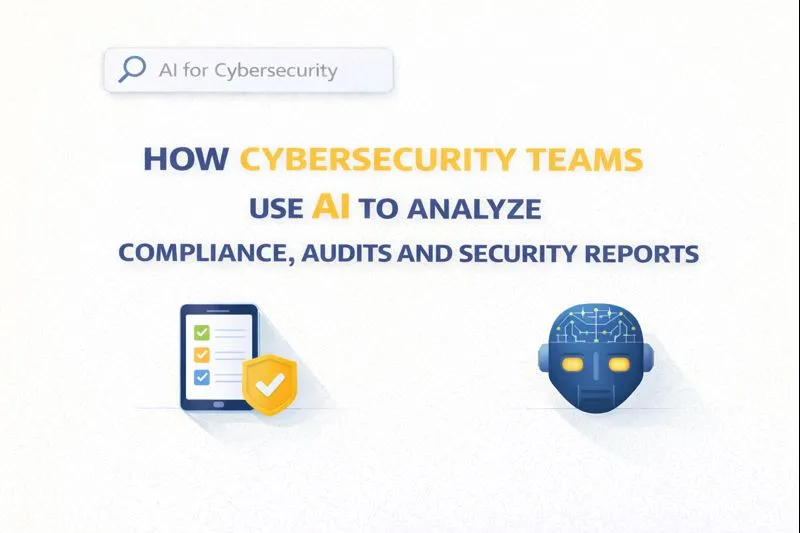Lookalike Audiences: 6 Tips to Increase Sales
TL;DR
Introduction: The Untapped Potential of Lookalike Audiences
Okay, so you wanna unlock some serious growth, huh? Then listen up, because lookalike audiences are where it's at. Seriously, it's like finding a cheat code for your marketing.
Basically, instead of just throwing ads into the void and hoping they stick, you’re using data to find people who are already likely to convert. Think of it like this:
- Find Your "Seed" Audience: Start with, say, your best customers – those who love your product and buy consistently. This is your starting point, the "seed" that grows into a whole new audience.
- Let the ai Do Its Thing: Platforms, like Meta (which owns Facebook and Instagram), Google Ads, and LinkedIn, use ai to analyze that seed audience. (Top 10 AI Tools For Data Audience Analysis - Insight7) They look at everything – demographics, interests, even their online behaviors.
- Expand Your Reach: The ai then finds other people who share those same characteristics. (Free AI Celebrity Lookalike Finder (No Login Required) | Galaxy.ai) Boom – you’ve got a lookalike audience, tailor-made for your business.
Imagine you're a cybersecurity company. Instead of generic ads about "protecting your data," you target people who:
- Follow cybersecurity influencers.
- Attend webinars on data breaches.
- Have job titles like "security analyst" or "it manager."
Or if you're a b2b saas platform for healthcare, you might target folks who:
- Are ceos of small to mid-sized clinics.
- Use certain types of medical software.
- Are active in online healthcare communities.
It's way more effective than just saying, "hey, healthcare people, buy our stuff!"
The potential here is huge. Now, let's get into the specifics of how to make these lookalike audiences work their magic.
Tip 1: Refine Your Source Data for Laser Precision
Alright, so you're thinking about lookalike audiences, huh? That's smart. But here's the thing nobody tells you upfront: garbage in, garbage out. I mean, duh, right? But it's so important to get right.
Your source data, that initial audience you're using to build your lookalikes, it's gotta be top-notch. Think of it like planting a garden, you wouldn't use bad seeds, would you?
- Ideal Customer Profiles (icps) are your friend: Seriously, spend time defining exactly who your best customer is. If you're in cybersecurity, are you targeting small businesses with 5 employees or massive enterprises with 5,000? Huge difference.
- crm Data is Gold, but Use it Wisely: Your CRM is probably overflowing with data. (The CRM Overload Problem: Are We Collecting Too Much Customer ...) But sales data, customer interactions, those mqls – that's where the real insights hide. Dig deep.
- Data Hygiene – sounds boring, but vital: Churned customers, irrelevant leads – get rid of 'em! You want a clean, laser-focused seed audience. Otherwise, you're just polluting the well, ya know?
Don't sleep on your website data. It's basically a goldmine of potential lookalike goodness. Both CRM and website data are valuable sources for building seed audiences, and they can often be used in conjunction.
- Content is King (and a Great Filter): Track who’s downloading your case studies or whitepapers. Those are high-intent prospects, and they're practically begging to be targeted.
- Behavioral Segmentation – get granular: Don't just lump all website visitors together. Segment them based on what they're doing. Pricing page visits? Add 'em to a "hot lead" lookalike.
- Google Analytics (ga) is Your Pal: Learn to love it! All this tracking and segmenting? ga (or whatever analytics tool you prefer) is how you do this.
Honestly, refining your source data it might seem like a pain, but trust me, it's worth it.
Okay, so now that we've talked about the who, let's talk about where you find these people. Hint: it involves pixels and some other sneaky tracking tricks.
Tip 2: Layer Interests and Behaviors for Expanded Reach
Okay, so you've got your source data dialed in, right? But don't think you're done just yet! Now comes the fun part: figuring out how to reach even more potential customers by layering in their interests and behaviors. After all, you don't want to just preach to the choir, do you?
The key is to get specific. Like, really specific. Don't just target "cybersecurity professionals." Think about what sub-niches they're interested in.
- Cloud Security Gurus: Are they obsessed with cloud security? Target folks following cloud security blogs and attending aws webinars. You can often find these individuals by targeting interests related to specific cloud platforms (like AWS, Azure, GCP) or by looking for users who engage with content from major cybersecurity news outlets or industry event pages.
- Threat Intel Junkies: Maybe they're all about threat intelligence. Hit 'em with ads related to threat feeds and ai-powered analysis.
It's about finding those little pockets of super-engaged people, ya know?
Demographics are cool and all, but behaviors are where the real gold is at. What are these people doing?
- Conference Goers: Target people who attended black hat or def con. They're clearly invested in the topic.
- Forum Lurkers: Find folks active in security-focused online forums. They're already asking questions and looking for solutions.
You're not just guessing; you're finding people who are actively engaging with cybersecurity topics.
Don't be afraid to get creative with custom audiences. This is where you can really start to see some magic happen.
- Competitor Website Stalkers: Target people who visit your competitor's website. Sneaky, but effective.
- Industry Publication Devotees: Find people who read cybersecurity news sites and blogs. They're clearly keeping up with the latest trends.
And hey, if you're looking to really level up your cybersecurity marketing, check out Grackerai. It can automate a lot of this stuff – daily news, seo-optimized blogs, ai copilot, newsletters, and more.
Okay, so now that we've got a handle on interests and behaviors, let's talk about something that's easy to overlook: audience size. Balancing reach with relevance is key.
Tip 3: Test Different Lookalike Percentages for Optimal Scale
Ever wondered if you're leaving money on the table with your lookalikes? Here's a simple truth: audience size matters, but so does their similarity to your best customers. It's a balancing act, not a one-size-fits-all deal.
You can't just set it and forget it. Different lookalike percentages will perform differently, so you gotta test 'em. Think of it like tuning an instrument – you tweak it until it sounds just right.
- Start with the basics: Try 1%, 3%, 5%, and even 10% lookalike audiences. See which one gives you the best conversion rates and cost per acquisition (cpa).
- Think about your goals: Are you going for massive reach or super-qualified leads? That'll influence your ideal percentage.
- Don't ignore your data: Keep a close eye on your performance metrics. If a 1% lookalike has a crazy-high conversion rate, but your volume is tiny, maybe a 3% audience will get you more conversions overall, even with a slightly lower rate.
For example, a retail company might find that a 1% lookalike of past purchasers yields incredible ROAS, whereas a financial services company might need a 5% LAL to achieve the scale it needs for its business model.
The marketing landscape it's always changing, so your lookalike strategy shouldn't be set in stone.
- Always be testing: Keep experimenting with different percentages, even after you find a good performer. Market conditions change, and what worked last month might not work this month.
- Segment your campaigns: Split your campaigns by lookalike percentage to really see what's working.
Remember, what works for one business won't necessarily work for another.
Okay, so you know how big to make your pond, but what if that pond just isn't producing fish? Let's talk about refreshing those audiences.
Tip 4: Leverage Multi-Platform Targeting for Comprehensive Coverage
Okay, so you're running lookalike audiences, but only on one platform, huh? It's like fishing in only one corner of the lake – you're probably missing out on some big catches.
The beauty of lookalike audiences is that you can use them everywhere. Think LinkedIn, Facebook (or Meta Ads), and Google Ads. Each platform offers it's own unique reach, and when you combine them, you get a much more comprehensive strategy.
- LinkedIn for the Professionals: If you're a b2b saas company, LinkedIn is gold. You can target lookalikes based on job title, industry, and company size. Imagine finding more of your ideal clients, the ceos and directors who actually make decisions.
- Facebook for the Masses (and the Details): Don't count Meta out just yet! Facebook's targeting options are still incredibly powerful. You can find lookalikes based on interests, behaviors, and demographics. Like, if you're an artist, you can target people who actually follow artists and engage with art-related content.
- Google Ads for Intent: Target people who are actively searching for what you offer. Use lookalike audiences to bid higher on those high-intent keywords.
Here's a crucial point: each platform is different. So, don't just copy and paste your ad creatives and messaging. Tailor them to each platform's vibe. What works on TikTok probably won't fly on LinkedIn, ya know?
And hey, don't forget retargeting. Hit those website visitors who interacted with your lookalike campaigns. It's like saying, "Hey, we saw you looking – are you sure you don't want to check this out?"
So, instead of sticking to one platform, spread your wings and see what's out there. You might be surprised at how much more you can achieve.
Next up, let's talk about how often you should be giving those lookalike audiences a little refresh. Stale data it's a real thing.
Tip 5: Implement Retargeting to Maximize Conversions
So, you've got your lookalike audiences humming along, finding you fresh prospects. Sweet! But, uh, don't just leave 'em hanging, alright? You gotta remind them why they should care about your stuff, ya know?
That's where retargeting comes in; it's like a friendly nudge. It's about showing ads to people who already saw your first ad, visited your site, or maybe even watched a video. Retargeting individuals identified as part of a lookalike audience builds upon the initial similarity the platform identified, reinforcing brand recognition and nudging them further down the funnel.
Brand Reinforcement: Think about it – they saw your lookalike ad, so they kinda know you. Retargeting reinforces your brand, makes you more familiar. It's like that catchy jingle you can't get outta your head.
Nudging Toward Conversion: They checked out your pricing page? Slam 'em with a limited-time offer! Downloaded a case study? Send 'em a personalized email with a special discount.
Retargeting warms up cold leads. It's like taking an ice cube and holding it in your hand – it thaws out, right?
Healthcare Example: Someone from your healthcare b2b saas lookalike audience visited your "request a demo" page, but didn't book? Hit them with testimonials from other clinics. Show 'em what they're missing!
Retail Example: A potential customer browsed a specific product on your e-commerce site? Show them that exact product in their Facebook feed. Make it too tempting to resist!
Finance Example: Did someone from your finance lookalike audience read your blog post about fraud prevention? Retarget with a whitepaper on the latest cybersecurity threats. Show them you're the expert.
Retargeting helps convert those lookalike audience members into paying customers! Next, let's talk about keeping your data fresh.
Tip 6: Continuously Monitor, Analyze, and Optimize
Alright, ready to make sure your lookalike audiences are actually working for their keep? It's not enough to just set 'em up and hope for the best, folks.
You gotta keep a close eye on what's happening, like, really close. Think of it as tending a garden; you wouldn't just plant the seeds and walk away, right? You'd be checking the soil, watering, pulling weeds – the same goes for your audiences.
- Conversion rates: Are those lookalikes actually buying what you're selling? If not, something's off. Maybe the audience isn't as similar as you thought, or maybe your ad copy is missing the mark.
- Cost per acquisition (cpa): How much are you spending to get each new customer from these audiences? If your CPA is too high, you're basically burning money.
- Return on ad spend (roas): Are you getting a good return on your investment? If not, it's time to re-evaluate your strategy.
Don't forget the basics, too. click-through rate (ctr) and engagement metrics are important, even if they're not the final conversion.
A/B testing is your best friend here. Don't be afraid to try new things and see what works. Run experiments with different ad creatives, messaging, and landing pages.
- Headline Tweaks: See what resonates more; a headline focused on "saving money" versus "increasing efficiency," get it?
- Image Swaps: Try different visuals to see what grabs attention.
But don't just guess; analyze the data and get user feedback. Are your target customers telling you something through surveys? Are they engaging with certain content?
And hey, let's not forget the boring-but-important stuff. You have to stay compliant with data privacy regulations like gdpr and ccpa.
"With great power comes great responsibility." - Uncle Ben probably wasn't talking about marketing data, but the sentiment applies.
Transparency is key. Make sure people know what data you're collecting and how you're using it. Implement data anonymization techniques to protect user privacy. For example, when using CRM data, ensure that personally identifiable information (PII) is removed or hashed before uploading it to advertising platforms. Also, provide clear consent mechanisms for data collection on your website.
Okay, so you're monitoring, testing, and staying legal – what's next? Let's talk about how to keep things ethical.
Conclusion: Scaling Sales with Smarter Audiences
Wrapping up, it's pretty clear that mastering lookalike audiences it ain't just some passing fad. It's about really understanding your customers and using that knowledge to find more of 'em.
So, let's recap, shall we? You wanna see those sales numbers climb? Then focus on these essential strategies:
- Nail Your Data: Garbage in, garbage out. Refine your source data like your business depends on it–because it does.
- Layer Smartly: Interests and behaviors? Get specific. Really specific. Cloud security gurus vs. threat intel junkies is a great start.
- Test, Test, Test: Don't be afraid to experiment with different lookalike percentages. A 1% audience might kill it ROI-wise, but a 3% might get you more volume.
- Go Multi-Platform: LinkedIn, Meta, Google Ads – use 'em all. Each platform it's got its own strengths.
- Retarget Relentlessly: Don't let those lookalikes forget about you! A little nudge can go a long way.
- Monitor Like a Hawk: Conversion rates, cpa, roas – know 'em cold. And for Pete's sake, stay compliant with data privacy laws.
But hey, the game is always changing, right? So, what's next for lookalike audiences?
- Emerging Trends: Forget just demographics. Think about psychographics and values. What motivates your audience? You can start gathering this data by analyzing survey responses, customer feedback, and even by observing the types of content your audience engages with most deeply.
- ai to the Rescue: ai and machine learning will get even better at finding your ideal customers. Gotta embrace that.
I mean, who knows what tomorrow brings? One thing’s for certain: adapting and always learning, it's the only way to stay ahead.
Lookalike audiences is about to get even more powerful, so get on board now.




